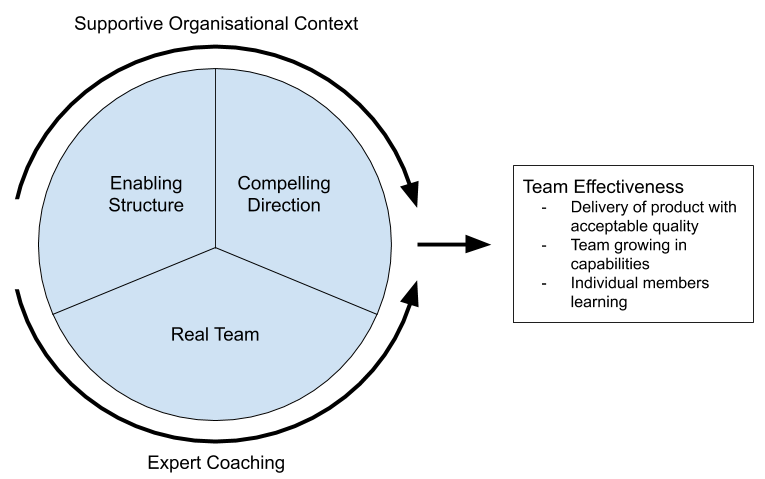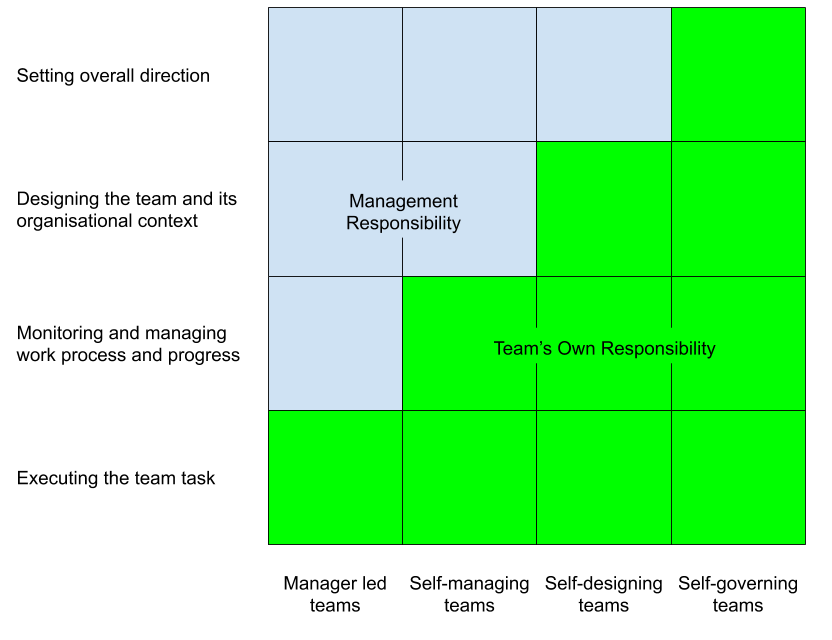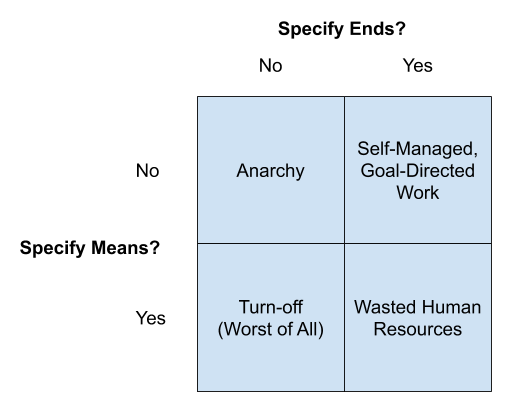 Leading Teams: Setting the Stage for Great Performances by J. Richard Hackman
Leading Teams: Setting the Stage for Great Performances by J. Richard Hackman
My rating: 4 of 5 stars
No leader can make a team work well, but all leaders can create conditions that increase the likelihood.

Real Teams have – a team task, bounded team, delimited authority to manage their own work processes, and membership stability over a reasonable period of time.
Team task – Where individuals are working independently (e.g. call answers) then this is not a team tasks and these people can not form a team, this instead is a co-acting group.
Bounded team – Actually knowing who all the people are – some groups have transient members which mean it can not form into a team.

Delimited authority – Clearly knowing what the team is permitted or not to do. Without this being made explicit the team with either be too timid or overstepping its bounds.
Stability over time – Teams perform better the longer they are together. The only exception is with design teams where fresh external ideas are useful.
Compelling Direction – Effective team self-management is impossible unless someone in authority sets the direction for the team’s work.
Energises the team members – creates a challenge which enhances motivation
Orients their attention and action – makes the direction clear and aligns performance strategy and purpose

Engages their talents – the direction has consequences and fosters full utilisation of knowledge and skill.
Enabling structure – work designed for the full team. It has been shown that individuals feel tasks foster internal work motivation thus a desire to perform well – their work is meaningful, they feel personally responsible for the outcome and can see the results of their efforts. When applied to teams this is bigger challenges, autonomy to excel and feedback to improve. There is a balance in all of these – too big a challenge, too much autonomy and not learning from feedback.
Norms – the teams should be constantly striving to improve and the behavioral requirements of how to and how not to behave. Taking an active, not reactive, stance to the environment as well as the behavioral boundaries which set out the small things that members must always do and those they must never do. This is because we naturally Reacting to whatever comes our way because it is easier to react to whatever comes our way rather than actively scan our environment. Stopping and reflecting is key to a team being able to be proactive in resolving issues. Secondly we seek harmony and as such we sometimes thoughtlessly do things which we should not and go further than we ought.
Composition of the team – the three common mistakes are assuming…
- the more the better, so putting too many people on the team – the potential productivity – the process losses = actual productivity which peaks about 4/5 people
- similar people will get along better so form homogeneous teams
- everyone knows how to work in a group so ignoring the interpersonal skills of prospective members
Supportive Context – Ensuring things such as reward systems recognise and reinforce good team performance not individual performance. Providing visibility of data so teams are better informed so they can plan and execute their work – usually the really important stuff is secret, providers and users speak different languages, a flood is as bad as a drought and information is power which some organisations try to keep at the top. Education and support so that people have the knowledge to solve their own problems.
Expert Coaching – direct interactions with a team to help members use their collective resources well in accomplishing work, this is usually provided by the team leader. Effort – building team spirit e.g by giving themselves a name, decorating their area etc which can significantly build motivation. Performance strategy – mindless reliance on habitual routines results in suboptimal performance. When a team gets in the habit of regularly doing scanning and planning activities genuine innovative ways of proceeding with the work often emerge. Knowledge and skill – where a team develop pattern of interaction that fosters learning from one another thereby increasing the total pool of knowledge available to a group.
What coaches don’t do – the focus should be on the team’s task not on members social interactions or interpersonal relationships. Harmony is not the aim – interpersonal issues might be because of structural or contextual conditions.
What effective leaders do – they stack the desk in the teams favour, getting the order right. Providing great coaching as poor coaching can reduce the effectiveness of the team. Great leaders create the conditions that promote team effectiveness any way they can. Have emotional maturity and courage,
 Resolving Conflicts at Work: Ten Strategies for Everyone on the Job
Resolving Conflicts at Work: Ten Strategies for Everyone on the Job